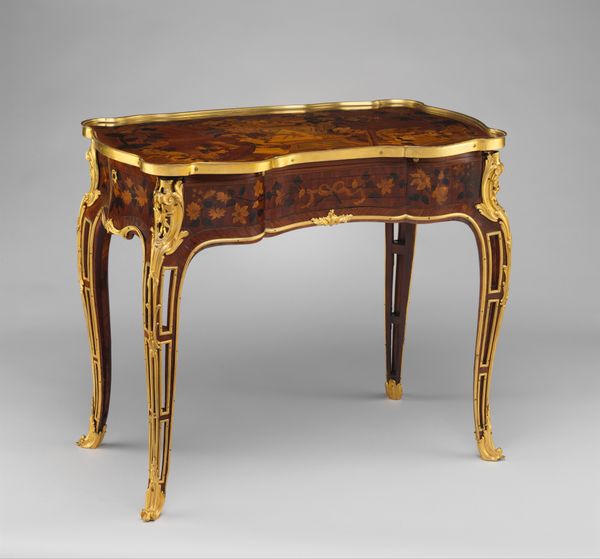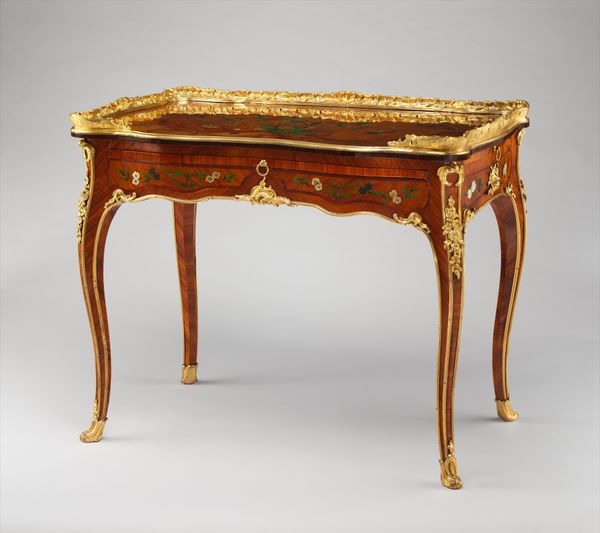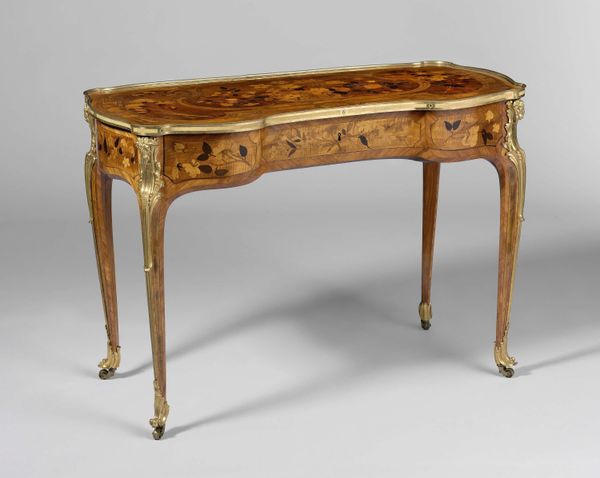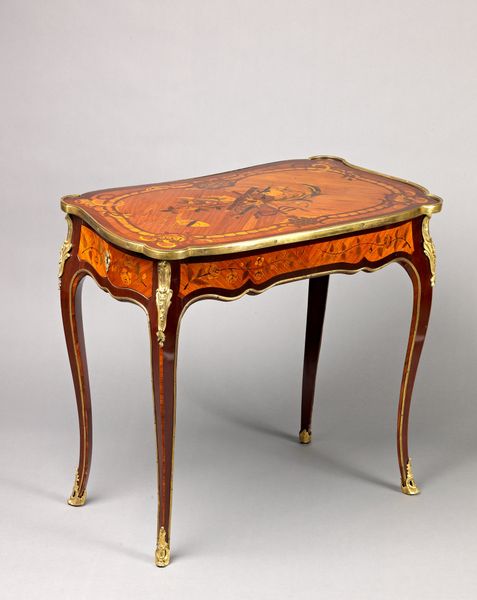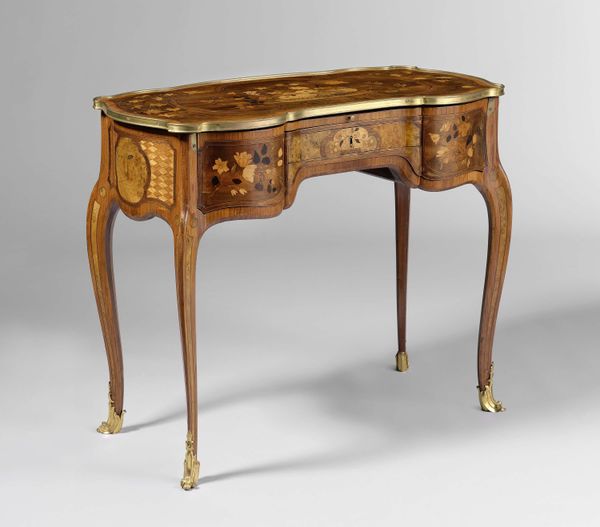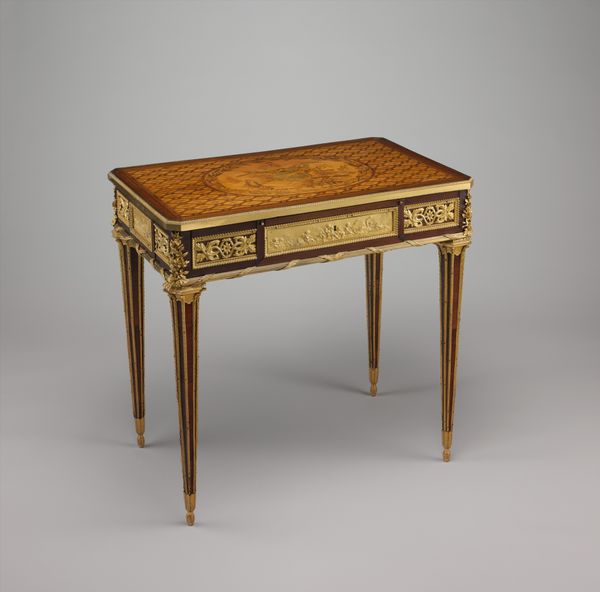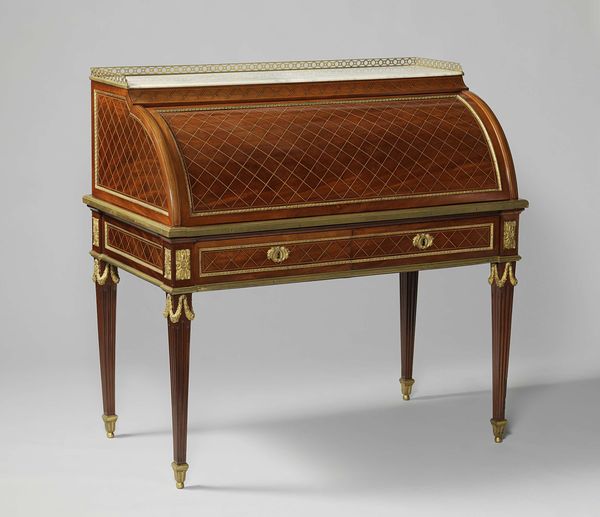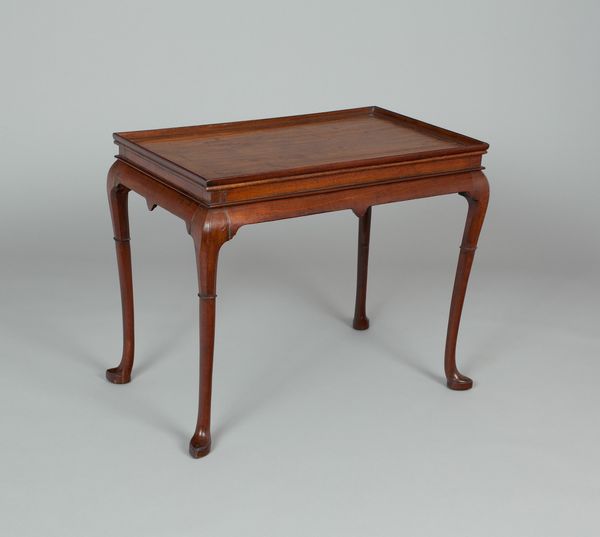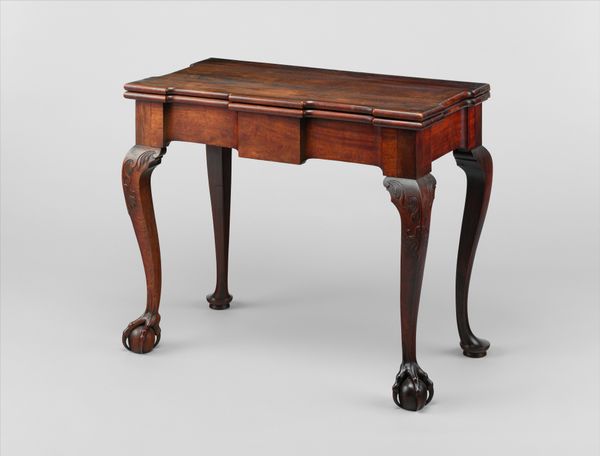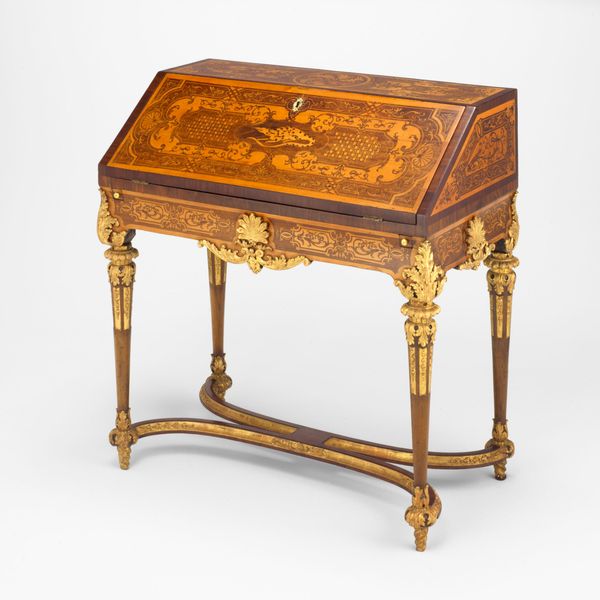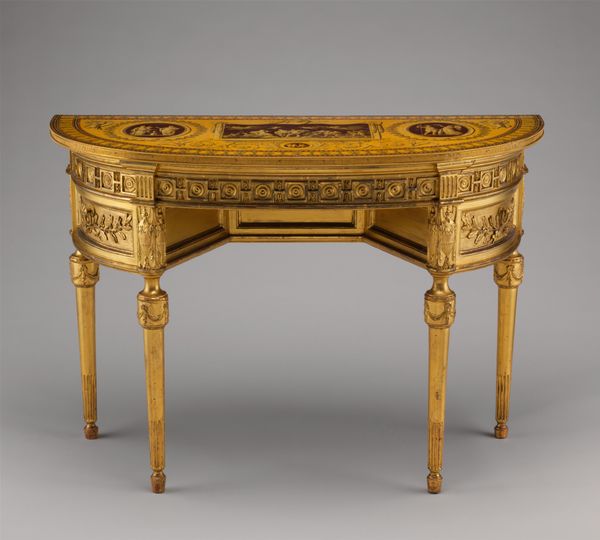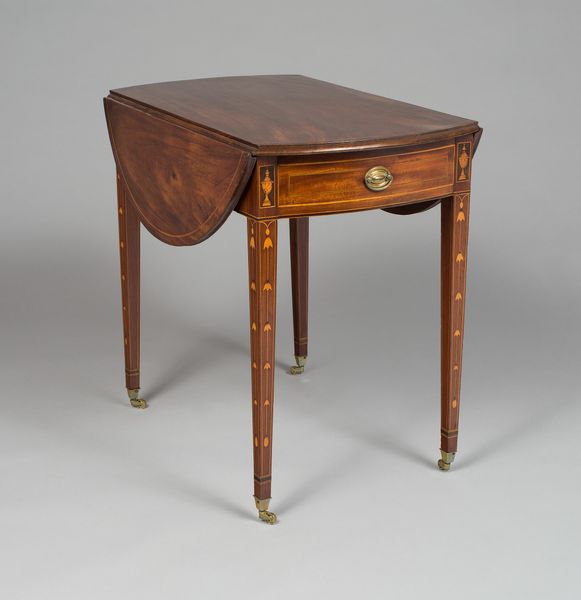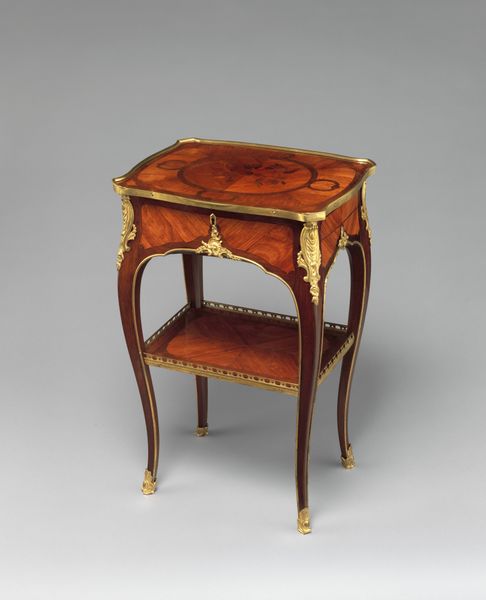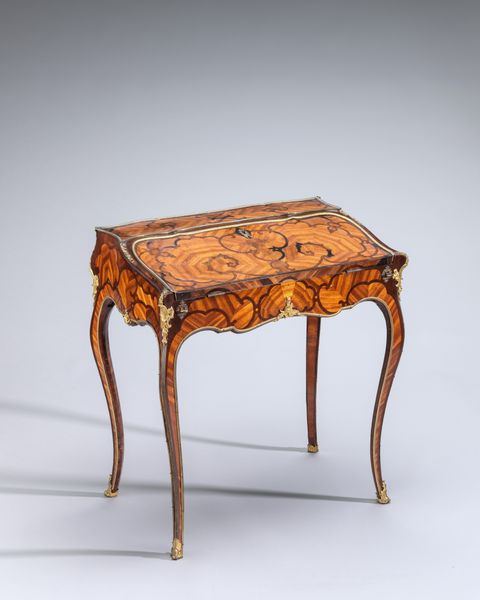
Folding card table (table de jeu brisée en angle) 1750 - 1770
0:00
0:00
sculpture, wood
#
furniture
#
sculpture
#
wood
#
decorative-art
#
rococo
Dimensions: H. 27-5/8 x W. 42-3/8 x D. 21-3/4 in. (70.2 x 107.6 x 55.2 cm)
Copyright: Public Domain
Curator: Wow, this folding card table is a serious piece of eye candy. Is it just me, or does this thing look like it could waltz right off into a fairytale? Editor: This remarkable folding card table, dating from 1750 to 1770, exemplifies the Rococo style, now housed here at The Met. It’s the work of Bernard II van Risenburgh, showcasing an extraordinary command of marquetry and gilt bronze detailing. Curator: Ah, Rococo! That explains the curves. Seriously, look at those legs! They're doing some kind of graceful dance. What's with the wood grain looking like a storm? It makes me feel excited and slightly anxious at the same time, as if about to enter a gilded cage. Editor: The richness of the wood veneer is remarkable, creating elaborate patterns with inlaid designs. Consider how this wasn't merely furniture; it served as a status symbol, embodying social rituals. Note that motifs popular during that period conveyed symbolic meanings. The table would act as a stage for games of chance. Curator: A stage! Yes, a theatre of the absurd where fortunes rise and fall on a turn of a card! And those gilded bronze accents - tiny flourishes of rebellion against... what? I guess gravity itself! What about this folding mechanism? Can we unpack that a little more, psychologically speaking? Editor: Indeed! It hints at transformation and secrecy, revealing and concealing information – just like the games played upon it. The folding mechanism allowed it to transform, perhaps mirroring the unpredictable shifts in fortune and social standing that characterized the era. In closed position, the table transforms into a discreet decorative piece. The psychology of "chance" in 1700s high-society involved perceptions and expectations very unlike what we can envision now. Curator: So it's both a game piece and a mask. It's no wonder people still find this piece mesmerizing today. The craftsmanship is immaculate, but the history of chance adds something else. I think that gives it real impact, like feeling echoes from centuries ago... What about you, any lingering thoughts? Editor: This convergence of art and social history continues to intrigue. How visual culture shapes behavior, and vice versa... The table represents a world long gone but whose cultural habits ripple into the present.
Comments
No comments
Be the first to comment and join the conversation on the ultimate creative platform.
